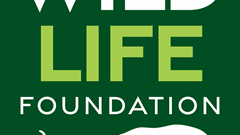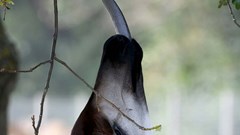Run for Wildlife - Spring 10k
27th April 2025
- Venue: Yorkshire Wildlife Park
- Capacity: 1500
- Distance: 10km
- Start time: 08:30am
- £26.00 includes your park entry!
- Virtual price: £13.50 (includes medal)
Curlys and the Yorkshire Wildlife Park team are very pleased to be returning with the fantastic 10k running safari, in support of the Wildlife Foundation!
The route is perfect for all running abilities, whether you're going for a personal best or a fun run! Explore the park en route as you jog past Lions, Tigers, Sea Lions, and more!
Everyone is welcome! Whether you walk, jog, run, or a little bit of everything, it's a great day out!
Let's get fundraising!
The WildLife Foundation is a charity based at Yorkshire Wildlife Park, Doncaster.
Find out more about the fantastic work the Foundation does and get involved in more fundraising, discover more about the animals they support, and be inspired!
Find out more about The Wildlife Foundation here!
This year's animal theme
Every one of our Run for Wildlife events has a unique animal theme to help raise awareness. It also provide us with our design ideas for the medal and optional t-shirt.
Say hello to the OKAPI...our 2025 featured animal.
A fascinating animal often referred to as the ‘Forest Giraffe’.
Okapi are native to the northeastern rainforests of the Democratic Republic of the Congo in Central Africa.
They are very shy, solitary and elusive animals. They use their long tongue to strip leaves from tree branches and shrubbery in the lower canopy. Their most defining feature includes the horizontal black and white stripes found around their rump and upper forelegs. Male okapis average around 2.5 metres long and stand about 1.5 metres at the shoulder. Females are generally slightly taller and weigh a little more than adult males.
Did you know?
Even though Okapi look more like a Zebra or Deer, they are in fact the only living relative of the Giraffe!
Threats
The species is most concentrated in the forests of the Ituri, Aruwimi and Nepoko basins. Okapi are vulnerable to large-scale intensive disturbances such as tree logging and human settlement. In some regions Okapi are also hunted using cable snares for their skins and meat.
Numbers
Latest estimates predict fewer than 4,500 individuals living in the wild with the population drastically falling by over 40% between 1995 and 2007.
So zebra leggings and brown tops make for the perfect way to represent the OKAPI on the day (if you fancy it)
Subscribe
Get the latest news & offers from Yorkshire Wildlife Park!
















